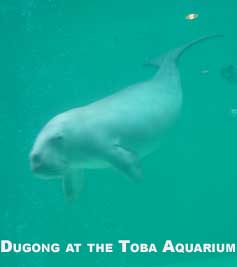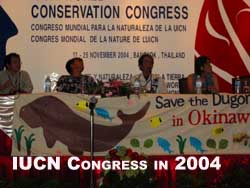
Our history and how this campaign has been organized
The dugong is a marine mammal which lives in the warm ocean. This animal, thought to be a model of mermaids, is endangered. The dugong population has been declined because of a number of human activities cause environmental destructions. A number of dugongs is also mistakenly caught by fishing nets.
In Japan, the dugong only lives around Okinawa, the southern part of Japan. However, there is a plan to construct a US military airport on the last dugong habitat in Japan.
The Japanese and the U.S governments began planning a relocation plan of the Marine Corps Air Station Futenma in Okinawa after 1995 when a 12 year old girl was raped by three U.S soldiers of the Camp Hansen and Okinawans stood up for the peace and safety in Okinawa. When the governments decided to remove the Futenma base, Okinawans thought the base would be moved to outside of Okinawa. However, in 1996, the Japanese and U.S. governments announced that the air station would be relocated to Northeast coast of the Okinawa main island, an offshore of Henoko. The plan is against the Okinawans’ wills. The construction will not bring the peace that Okinawans want in Okinawa. The new base will destroy the beauty and the bio-diversity of Henoko. As a result, the existence of the dugong will be critically threatened.
This plan has not been executed yet but the governments are trying to start constructing it in 2009.
Okinawans and supporting organizations including the Save the Dugong Campaign Center (SDCC) have acted to protect Henoko against the new construction plan. There have been many forms of protests, and SDCC mainly has opposed to the plan from the environmental point of view.
In 2000, before SDCC was established, a motion was proposed to the World Conservation Union (IUCN) by dugong supporters across Japan. The motion calls for the conservation of rare animals around Henoko. During the IUCN congress in Amman, Jordan, IUCN adopted a recommendation, " Conservation of Dugong (Dugong dugon), Okinawa Woodpecker (Sapheopipo noguchii) and Okinawa Rail (Gallirallus okinawae) in and around the Okinawa Island," Both the Japanese and the U.S. governments were asked to commit a proper environmental assessment and to assure the protection of these animals.
In 2001, SDCC was established in Tokyo, Japan, to make the Japanese government realize the recommendation. The Environment Ministry of Japan conducted researches on the Okinawa Dugong and seagrass beds, dugong’s major subsistence. The ministry confirmed that the seagrass beds exist around the construction area. It became apparent that the construction affects the dugong’s lives. Yet the Japanese government made no change on the construction plan.
In 2004, IUCN adopted a similar recommendation. It is exceptional that they release a similar recommendation more than once. It tells us how poorly the Japanese and the US governments had responded to the previous recommendation and how important this issue is.
Yet the plan is not suspended, we believe these IUCN recommendations have made the plan delayed and made the government realized that they cannot ignore environmental issues.
In 2008, SDCC submitted the third motion to protect the Okinawa Dugong to IUCN for the congress held in October 2008 in Barcelona, Spain. The motion was accepted in August. IUCN members, governments and NGOs, will discuss this motion during the congress. Our stuffs will join the congress so that the motion is adopted.
In addition to acting as an IUCN member, we organize study tours to Okinawa and the Toba Aquarium, hold dugong illustration and photo shows and join NGO events.
We hope more people know about the dugong and support our activities!
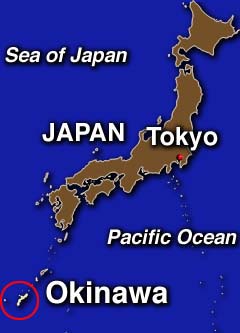
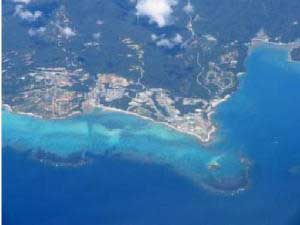
Henoko:Photo By Mezaki Shigekazu
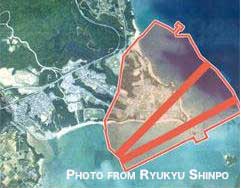
V-shaped heliport plan
